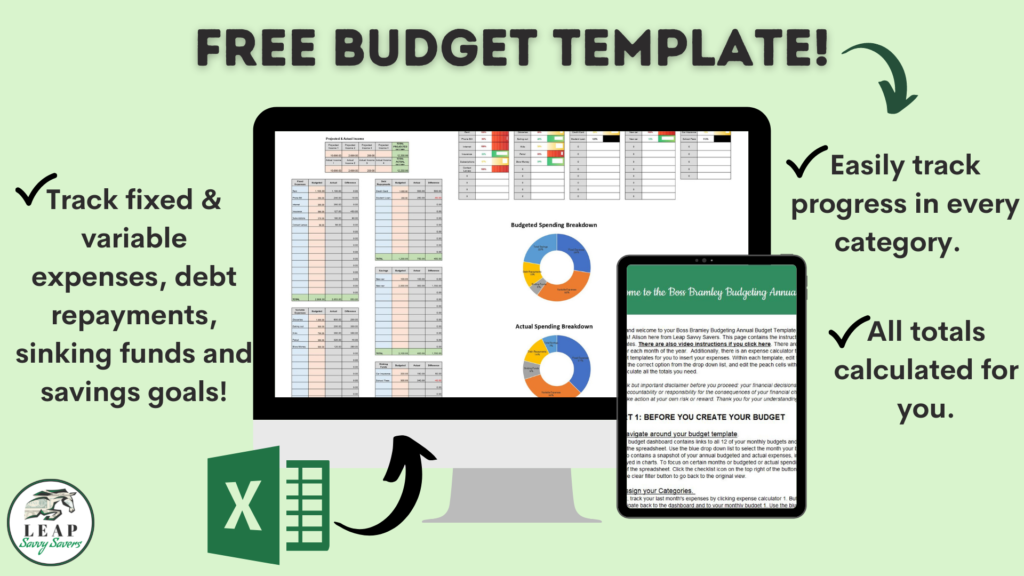Getting a head start with money management can make a huge difference to a person’s entire life trajectory. A lot of parents fall into the trap of thinking that giving as much financial support as possible to their children is the key to putting them out front as they begin adulting.
But what is more valuable than being given money? Being taught how to manage money. Think of all the lottery winners that go broke – having more money is not always the solution. Teaching your children how to manage small amounts of money from a young age can help give them the best start in life.
So, what’s the best way to do that? We can’t just start talking to a 5-year-old about credit scores and the stock market, right? No, not advisable. But we can start guiding them in the right direction from a young age. Here are some ideas for you to implement as early as 4-5 years old.

1. Teach them that money is, at its core, an exchange of value.
Show them that money is earned from an early age; money is exchanged for value added to the marketplace. Even if you don’t want them to feel like a job is the only option later in life, most people (even those with passive income streams) started by earning or working for the money. The person who earns money from book sales must earn that money by writing the book, just as the person who works as a waitress must earn money waiting tables at a restaurant. The result is different as one becomes royalty income and one is earned income; however, the basic premise is that all people must work or create or provide to receive money.
You want one of the first lessons to be that money is an exchange at its core – you provide value or service and get paid money, then you pay money for value or service. You can teach this by example – give them money in exchange for ‘working’. Perhaps you can pay them for doing chores or if you don’t like that idea, reading books or writing a story. If you feel that everyone in the family should do chores by necessity and you don’t want the children to think that they are entitled to payment every time they sweep a floor, you can set up a roster of basic chores for members of the household, then offer to pay them for extra work. If they go above and beyond, they receive payment. However you decide to demonstrate this, plan it out before posing the idea to your children, so the boundaries are clear.

2. Separate money into 3 clear jars.
When they have earned or been gifted money, change notes into smaller denominations and ask them to split the money between 3 jars, labelled ‘spend’, ‘save’ and ‘give’. As much as possible give them the choice about how much will be added to each jar but guide and teach them what each means and make it clear that some money out of each ‘paycheck’ must go into each jar. Explain that the ‘spend’ jar is for satisfying immediate needs and wants, the ‘save’ jar is for future goals and buying larger things and the ‘give’ jar is to help or gift to others.

3. Show children the cost of things.
When you’re explaining the meanings of the different jars, ask them what they would like to spend the money on. Elicit a few things, preferably of different values, for example a packet of sweets, a toy car and a dollhouse.
Now you can explain that they could probably afford to buy a packet of sweets now, but they can’t afford a dollhouse yet and that is why they must earn more money next week to be able to buy it. Ask them which things from their list of wants they desire most. If it’s the cheap option, then they can buy it now. But if it’s the more expensive option, such as the dollhouse, then more saving is necessary.
Look at the prices of some dollhouses on Amazon together then count their money. Discuss how much they would have to work to buy it. You are teaching them that things cost money and hours of life exchanged too. Guide them to split their money between the jars depending on their goals. For example, if they really want to buy an expensive item, then more money should go into the ‘save’ jar.
Holding the money in clear jars can provide a great visual to see their stash of money growing as they earn it. You could also stick a chart on the wall above and colour it in as they save towards their goal. You are gently encouraging them into a saver mindset rather than a spender mindset.

4. Introduce them to investing.
You might think you have to wait until they are older to educate them about the stock market, but this isn’t the case. As a way to entice them to save more, especially if you have a natural spender, give them 1 AED for every 5 AED that they save. Of course, you can alter the amounts to suit you.
The point is that they learn about investment returns, passive income, and delayed gratification. You don’t have to teach them those terms explicitly; just explain that if they resist the urge to spend all the money that comes their way, then there is a possibility they could earn more money just for their patience.
You are teaching them about earning interest on their money and a key method to build wealth from an early age! As they get a bit older, you can introduce a 4th jar, labelled ‘invest’ and explain the difference between saving and investing – that each has a purpose, and both are needed. You can distinguish between saving money – subject to inflation, but is necessary to cover emergencies and save for short term goals in cash, then investing – their wealth-building tool.

5. Help them choose how they will give with their money.
Remember that their money is split 3 ways – ‘save’, ‘spend’ and ‘give’. Offer them some options as to how they can help others with their money – perhaps donating to a charity or buying a teacher or friend a small gift.
It’s important that they go through the process of purchasing something for someone else and giving them the gift or actually handing the money to the charity representative. The person’s reaction is almost guaranteed to make your child feel on top of the world. Make a big deal of their feelings – write them down or draw them – you want them to remember how good it feels to help others.

6. Create a mini budget with your child.
Preparation for back-to-school is a perfect time to do this – during the summer they are more likely to have the headspace to really learn and internalize the messages. Sit down and sketch out a budget.
Start with an amount – say 500 AED – and list a range of items that need to be bought along with the prices. Do the sums together – do you have enough for each item? Make sure before you do this with your child that the total of all the school items is slightly more than the budgeted amount. Talk about the options available – we could reprioritise the list to see if there is anything we could take out, search around for cheaper alternatives, or increase the allocated amount for the budget.
Be sure to tell them that in real life it may not always be possible to increase the budget though, so it’s best to try to be creative with the allocated budget first, before just adding more to it. I have another post on saving for back-to-school here if you are interested in more tips to enjoy back-to-school spending without blowing the budget.

7. When your child is a little older, open a savings account together.
Now you can take the idea you have cultivated from the jars method and go along and deposit their money in the bank. Open an internet banking account and track the money together.
The goal is that you encourage them to get hooked on watching money grow before they have a chance to get addicted to spending money. You haven’t got long before consumerist advertisements toxic claws grip your children – it happens to everyone.
Depending on where you are in the world, it may be possible to open an investment account for them too and show them the differences between saving and investing. In the UAE, I invest for my children through Interactive Brokers. I just invest in a different ETF for them than for the adults. When they get a little older (perhaps pre-teen), I plan to show them exactly how their money has grown and what happens to it once they make a trade.

8. Coach them about credit.
As children reach their teens, demonstrate how compound interest can either work for you or against you. Educate your child about the risks (and potential rewards if used sensibly) of credit cards, loans and mortgages. Show them interest charged when you take out credit and a real example of how much something would cost if you bought it with a credit card and only paid off the minimum balance.
You can also offer them the alternative – a person who pays their card off in full each month has the potential to earn cashback and points from a credit card but warn them that these only work for you if you pay the card in full every single month.
On the other hand, you can show them that through investing, compound interest can multiply their money over time. But only if handled sensibly and rationally. Give them a few scenarios and ask them to work through what they would do. For example, John has been paid and wants to buy things and go out, but could invest his money – what should he do? You could compromise and say that John splits his money – some goes towards investing and some towards going out and enjoying the now. This way they can learn the balancing act that is managing money and making decisions about money.

9. Demonstrate gratitude and respect for what you already have.
Perhaps the best money lesson you can pass down is to try to curb the natural human desire for ‘more, more, more’ at an early age. Practise gratitude regularly and openly around your child.
Make it a habit to say every day and out loud how grateful you are for healthy food, a safe house to live in, central heating or air conditioning and a warm bath. These are likely things that your child will take for granted if you have all these staple necessities. Warn them explicitly about the dangers of consumerism, social media and comparison with ‘the Joneses’.
Show them through your own words and actions how much more contented and peaceful it is to live in gratitude for what you have.

10. Share your money story with them.
The final and most important idea is to be honest and open with them. As money is seen as a ‘taboo’ subject, many people grow up in homes whereby money is either not discussed or referred to in a negative way (e.g., ‘we can’t afford it’ or ‘money is the root of all evil’), and they carry this ignorance into their adult lives. The negative cycles are perpetuated.
You can break those cycles by simply being honest and open. Discuss the family finances with your children – your goals and budget. For example, if they really want to impulsively buy something when out shopping, such as a toy, but it isn’t in the budget, explain that if you buy small frivolous items now, perhaps you won’t be able to save for the trip to Disney that you have set as a goal (or whatever it might be).
Show them that you aren’t perfect and tell them your money mistakes. They will relate to you more if you come across as a normal person who makes mistakes than someone who constantly tries to lecture them. Trust me – it will increase their trust in you, not decrease it.

By educating your child in a practical way about money, you can set them up for a successful adult life in so many ways. No matter how we spin it, money underpins everything. Yes, it’s true that money can’t buy happiness, but lack of it or a money struggle can cause real stress and unhappiness.
Being financially literate enables your child to make informed choices. Perhaps they won’t have to be trapped in a toxic work environment or an abusive relationship in the future because you took the time now to show them how to manage their money effectively!
What further tips do you have for teaching children about money? Comment below – I love hearing from you.



